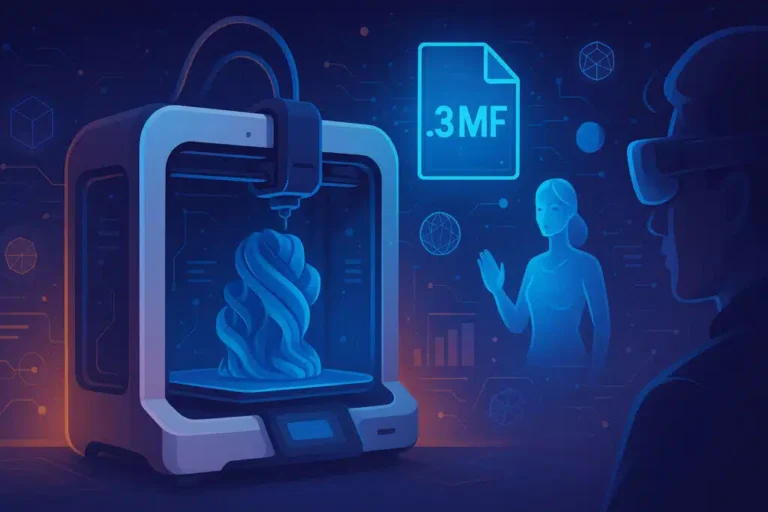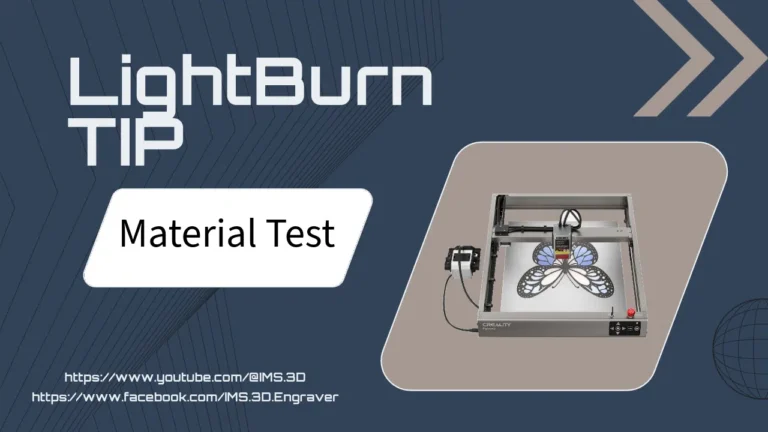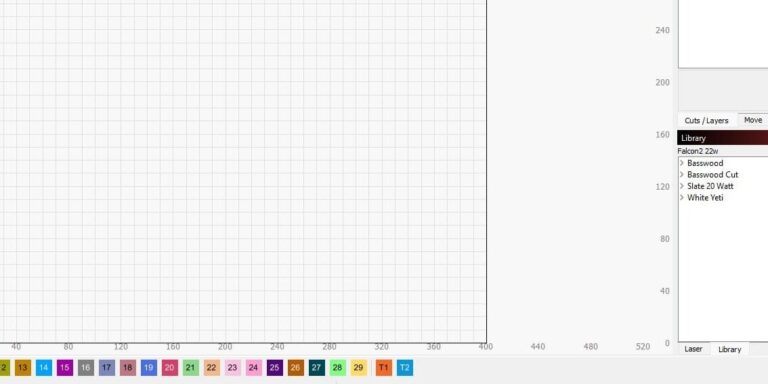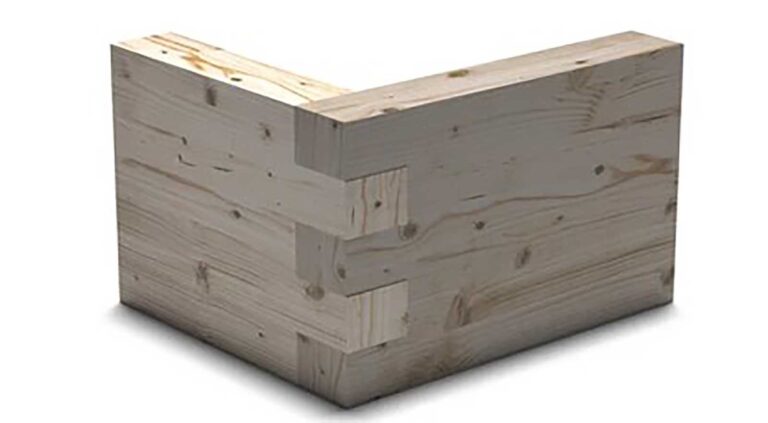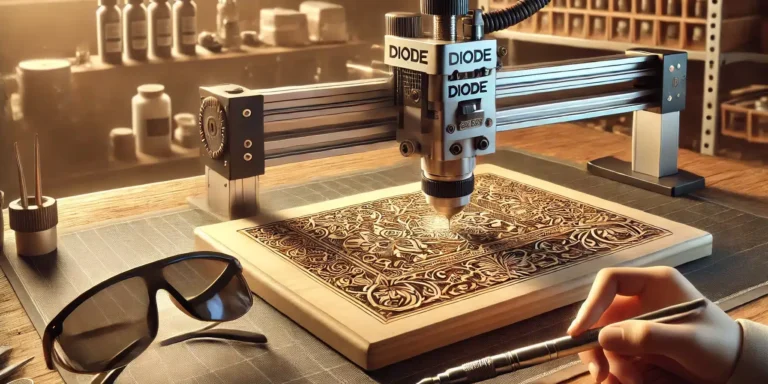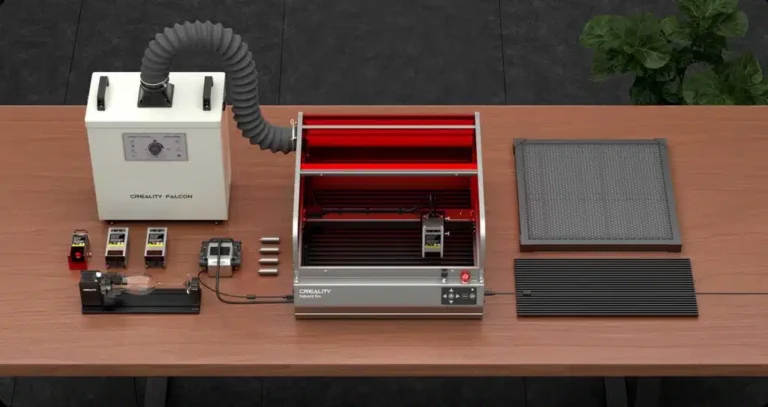In the rapidly evolving world of 3D printing, the choice of file format can significantly impact the efficiency and quality of your printing projects. Among these file formats, the .3MF (3D Manufacturing Format) file has emerged as a powerful tool designed to streamline the 3D printing process. This blog post aims to demystify what .3MF files are, illustrate their advantages, and provide practical advice on how to obtain and utilize these files effectively.
.3MF files were developed as a response to the limitations of older file formats, which often struggled with reliability and lacked support for newer printing technologies. As we delve into this topic, we’ll explore the origin of .3MF files, their unique features, and why they’re becoming the preferred choice for professionals and hobbyists alike. By the end of this post, you will have a solid understanding of .3MF files, ensuring you can make the most out of your 3D printing capabilities.
Let’s begin by defining what a .3MF file actually is and why it matters in the context of modern 3D printing.
What is a .3MF File?
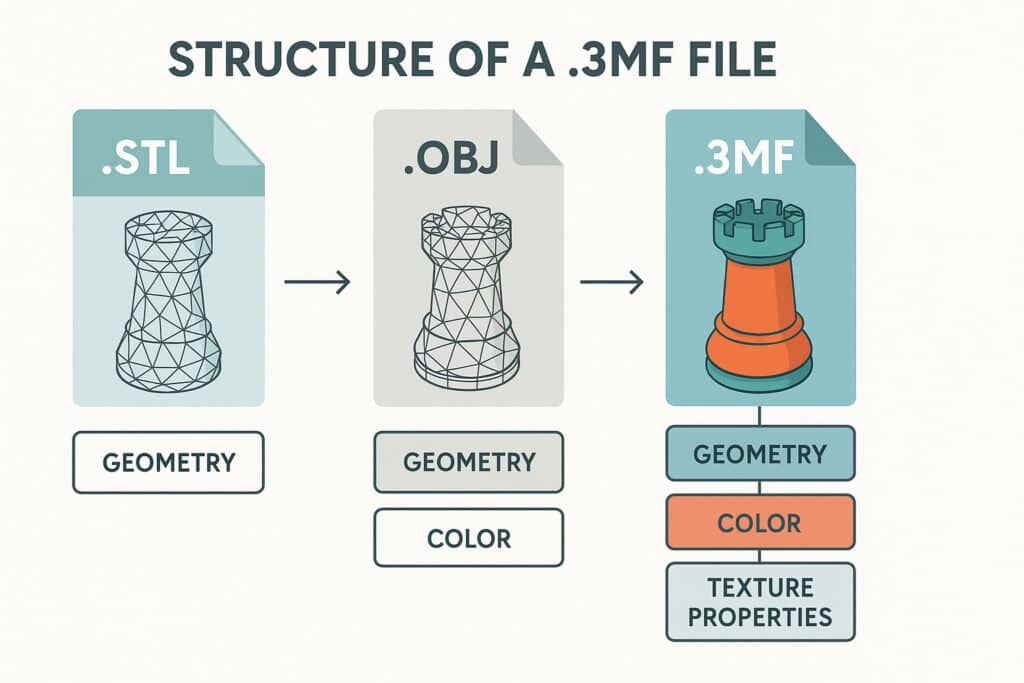
A .3MF file is a 3D printing format that was developed to improve the integration, transport, and storage of 3D printing data. This format was designed by the 3MF Consortium—a group composed of major industry stakeholders like Microsoft, Autodesk, and HP—aiming to create a more robust and reliable standard for the 3D printing industry.
Unlike traditional 3D printing file formats such as STL (stereolithography) and OBJ (object file), which only contain information about the outer shell of a model, .3MF files can include a wealth of information. This includes color, texture, material, and more detailed metadata that are essential for high-quality 3D printing. Furthermore, .3MF files are capable of describing an object as a whole, without the need for component assembly instructions, which can significantly simplify the printing process.
Key Features of .3MF Files Include:
- Rich Metadata Handling: They can store detailed metadata about the model, including scale, color, and material.
- Support for Non-Manifold Surfaces: .3MF files handle complex geometries better than STL files, supporting surfaces that intersect themselves.
- Elimination of Ambiguity: They remove much of the ambiguity present in other formats regarding units of measurement and material characteristics.
These capabilities make .3MF files not only a technical improvement over previous file formats but also a practical enhancement to the workflow of anyone involved in 3D printing.
Benefits of Using .3MF Files for 3D Printing
The .3MF file format offers several significant advantages that help streamline 3D printing projects from conception to reality. Here are the primary benefits that make .3MF files particularly valuable in the 3D printing process:
1. Enhanced Accuracy and Detail:
- Rich Color and Texture: Unlike STL files that only carry geometric data, .3MF files support full-color textures, allowing for more detailed and visually accurate models.
- Precise Metadata: These files include precise information about materials, colors, and textures, which are crucial for multi-material and multi-color 3D printing.
2. Universal Compatibility:
- Software and Hardware Support: Many leading 3D printing software and manufacturers have adopted the .3MF standard, ensuring smooth file handling across different platforms and devices.
- Reduced Errors in File Translation: The comprehensive nature of .3MF files means less room for error when files are transferred between different software, leading to fewer failed prints and troubleshooting sessions.
3. Streamlined Printing Process:
- Integrated Information: With capabilities to store information about the model’s layout and support structures, .3MF files can automate much of the print preparation process, reducing setup time.
- Efficiency in Production: For industries using 3D printing for mass production, .3MF files provide a reliable format that supports automation and integration with manufacturing workflows.
In a recent project handled by a prominent automotive manufacturer, .3MF files were utilized to create detailed, color-accurate prototypes of new car parts. The use of .3MF allowed designers to rapidly iterate on designs without miscommunications and errors common with other file formats, reducing the prototype phase by several weeks.
By leveraging the full capabilities of .3MF files, businesses and hobbyists can achieve higher quality prints with less wasted time and material, making the 3D printing process more cost-effective and efficient.
How .3MF Files Improve 3D Printing Workflows
The introduction of .3MF files into the 3D printing workflow can bring significant improvements in both the quality and efficiency of print jobs. Here’s how adopting .3MF files can transform the standard 3D printing process:
1. Simplification of Design-to-Print Process:
- Unified File Solution: .3MF files consolidate what used to require multiple files and formats into a single, comprehensive file that carries all necessary information for printing. This means fewer files to manage and less confusion during the file preparation phase.
- Direct Software Integration: Most modern 3D design and printing software now offer native support for .3MF files, allowing designers and engineers to directly export their models into this format, streamlining the workflow.
2. Enhanced Print Reliability and Quality:
- Detailed Instructions: By including more detailed metadata, .3MF files provide 3D printers with clearer instructions on how to handle each part of the print, such as different color zones or material properties, resulting in more accurate and reliable outputs.
- Reduction in Print Failures: The precision and clarity of .3MF files can significantly reduce the incidence of print failures due to file errors, saving time and resources.
3. Efficiency in Collaborative Environments:
- Easier Collaboration: The ability to include so much detailed data within a single file makes .3MF an ideal format for teams working on complex projects. Each team member can access a comprehensive file that includes all the necessary specifications for accurate model reproduction.
- Standardization Across Departments: As .3MF becomes more widely accepted, it helps standardize file preparation across different departments or even different companies, reducing the need for conversions and the errors that come with them.
Real-World Example: A tech startup specializing in customized 3D printed prosthetics found that switching to .3MF files reduced their overall project time by 20%. The enhanced file format allowed their design team to work seamlessly with the manufacturing team, ensuring that each prosthetic was printed with the correct material specifications and support structures without the need for extensive back-and-forth communications.
By integrating .3MF files into their workflow, businesses can not only improve the efficiency of their operations but also enhance the overall quality of the final printed products.
Creating and Exporting .3MF Files
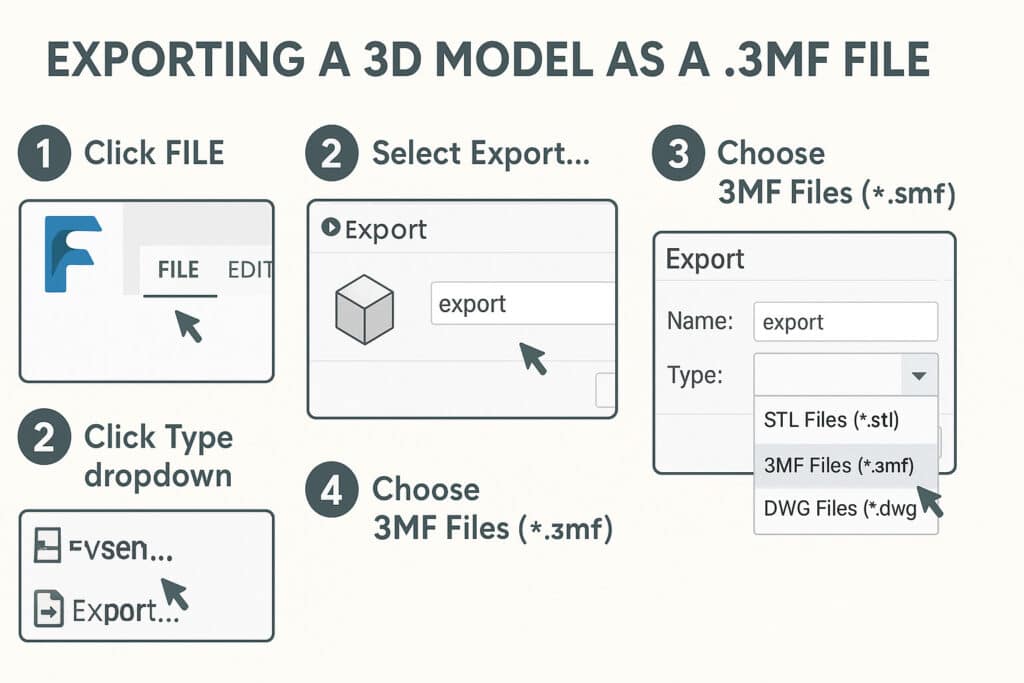
Transitioning to the .3MF file format can seem daunting, but many popular 3D modeling software platforms make it straightforward. Here’s a step-by-step guide on how to create and export .3MF files from some of the most commonly used 3D modeling tools:
1. Autodesk Fusion 360:
- Step 1: Complete Your Design: Ensure your 3D model is fully designed and ready for export.
- Step 2: Check the Design for Errors: Use the software’s analysis tools to check for any design errors that might affect the printing process.
- Step 3: Export to .3MF: Go to the ‘File’ menu, select ‘Export,’ and choose ‘.3MF’ from the list of file formats. Ensure that all necessary metadata (like color or material properties) is included.
2. Blender:
- Step 1: Prepare Your Model: Finish modeling and texturing your object within Blender.
- Step 2: Select the Object: Click on the object you wish to export.
- Step 3: Export as .3MF: Navigate to ‘File’ > ‘Export’ and select ‘.3MF.’ Adjust the export settings as needed to include all relevant data.
Screenshots and Visual Aids: Include screenshots from each software showing the export process to assist users visually.
Software-Specific Tips:
- Material Settings: For software that supports it, set your material and color settings before export to ensure they are correctly embedded into the .3MF file.
- Check Compatibility: Always ensure that your 3D printer’s software can interpret all the features used in your .3MF file, such as textures or multi-material prints.
3. Using Third-Party Tools for Export: For software that does not natively support .3MF exporting, third-party plugins or tools can be used to convert your files. Tools like MeshLab or third-party add-ons for older versions of software can bridge this gap efficiently.
Practical Example: A furniture design firm regularly uses Autodesk Fusion 360 for creating detailed furniture models. By exporting their designs as .3MF files, they are able to easily share designs with their manufacturing department, which uses a variety of 3D printers, ensuring high fidelity from design to physical product.
By following these guidelines, anyone from hobbyists to professionals can start integrating .3MF files into their 3D printing workflow, enhancing the overall efficiency and output quality.
How to Convert Other File Formats to .3MF
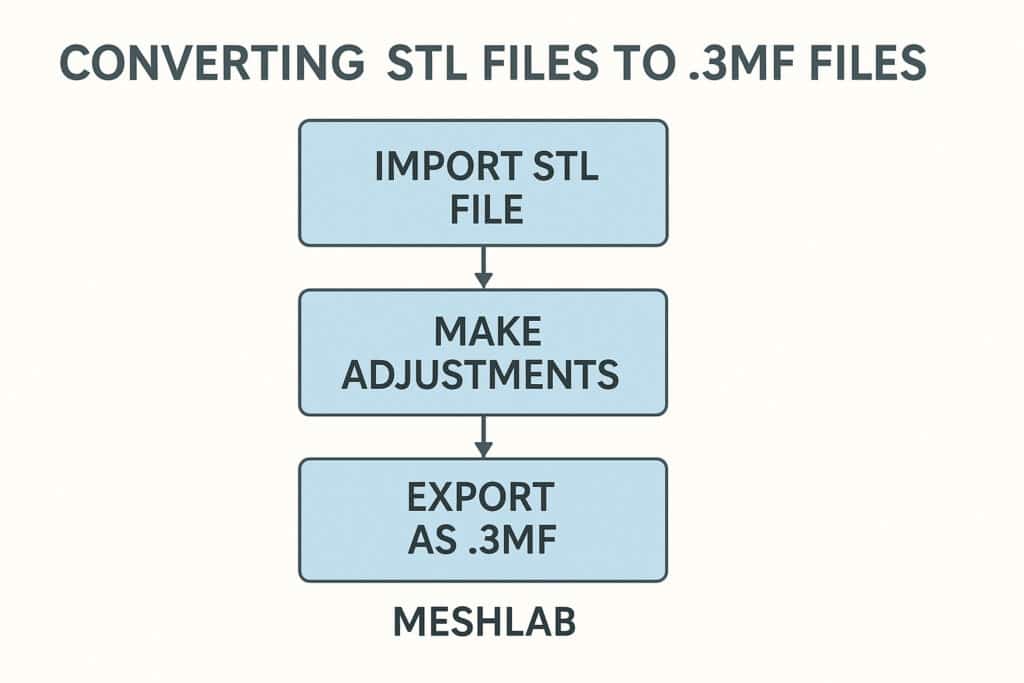
For those who have existing 3D models in formats like STL or OBJ, converting them to .3MF can unlock the additional benefits of this more robust file format. Here’s how you can convert your existing 3D files to .3MF using various tools:
1. Using Built-In Software Features:
- Example: Microsoft 3D Builder:
- Step 1: Open Microsoft 3D Builder and import your existing STL or OBJ file.
- Step 2: Make any necessary modifications or repairs to the model within the software.
- Step 3: Select ‘Save As’ and choose .3MF as the file format to export your updated model.
2. Online Conversion Tools:
- Example: AnyConv or Convertio:
- Step 1: Visit the website and upload your existing 3D file.
- Step 2: Select .3MF as the output format.
- Step 3: Click ‘Convert’ and download the new .3MF file once the process is complete.
3. Dedicated Conversion Software:
- Example: MeshLab:
- Step 1: Open MeshLab and import your 3D file.
- Step 2: Use the software’s tools to check and repair the mesh if necessary.
- Step 3: Export the model by selecting ‘File’ > ‘Export Mesh As…’ and choosing .3MF from the file type list.
Tips for Successful Conversion:
- Check for Errors: Always inspect your converted files for any errors or loss of data, especially in color and texture details, which are crucial for the print quality.
- Optimize the Model: Reduce the file size by removing unnecessary details that may not affect the final print but will complicate the printing process.
A hobbyist modeler wanted to print a series of character models originally saved in OBJ format for a tabletop game. By converting them to .3MF, they were able to easily print models with intricate details and multiple colors, which were not supported by the original OBJ files.
Converting to .3MF not only preserves the details and quality of your original models but often enhances the final output by leveraging the advanced features of the .3MF format.
Where to Obtain .3MF Files
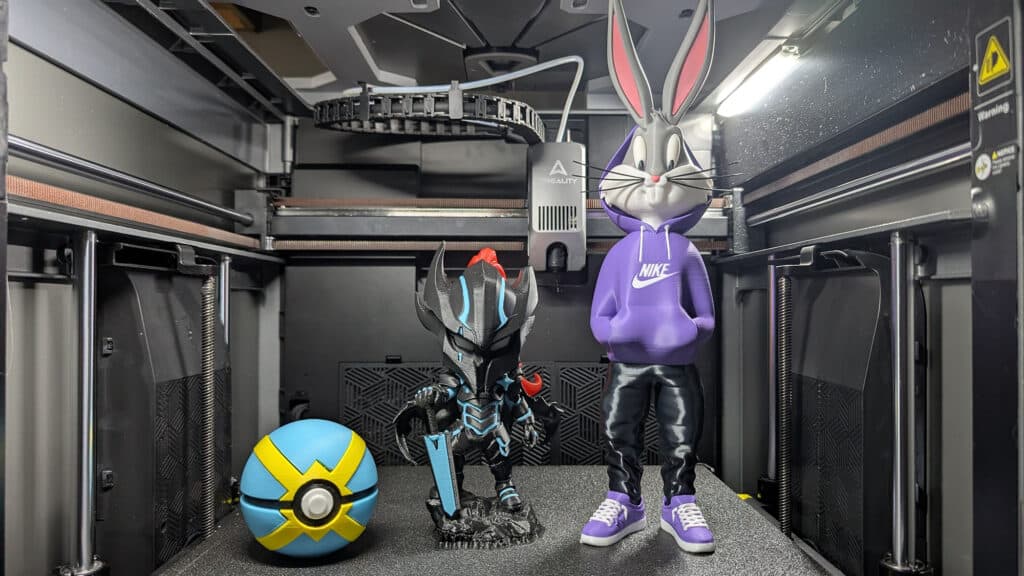
For those looking to start with .3MF files without creating them from scratch, several reputable sources offer ready-to-use .3MF models. These platforms range from community-driven repositories to professional marketplaces offering high-quality designs. Here’s where you can find reliable .3MF files for your projects:
1. Thingiverse:
Overview: Primarily known for STL files, Thingiverse also hosts a growing collection of .3MF files shared by a community passionate about 3D printing.
Type of Models: Includes everything from simple household items to complex mechanical parts.
Access: Free to download, with user accounts available for uploading and interacting with the community.
2. MyMiniFactory:
Overview: Offers a curated selection of 3D models vetted for printability, with a dedicated section for .3MF files.
Type of Models: Features a wide range of models, including artistic sculptures, functional tools, and educational aids.
Access: Both free and paid models are available, with options to follow creators for updates on new models.
3. Cults3D:
Overview: A digital marketplace providing high-quality 3D print files from professional designers, including a robust selection of .3MF files.
Type of Models: Ranges from jewelry and fashion items to toys and home decor.
Access: Mix of free and premium models, with options to purchase designs directly from creators.
4. Makerworld:
Overview: An expanding platform dedicated specifically to high-quality, print-ready .3MF files, attracting hobbyists and professional makers alike.
Type of Models: Focuses heavily on practical, creative, and innovative models tailored to various needs, including gadgets, functional prototypes, and artistic designs.
Access: Offers a balanced selection of free and premium models, providing detailed descriptions and preview capabilities.
Tips for Choosing .3MF Files:
Verify Compatibility: Before downloading, ensure the .3MF files match your 3D printer’s specifications and capabilities.
Check Reviews: Look at reviews and ratings from other users to gauge the quality and reliability of the files.
Preview Files: Use the platform’s preview features to inspect the model’s details, particularly for complex or multi-part designs.
Using .3MF Files Effectively:
Once you’ve downloaded a .3MF file, review the included metadata for instructions on materials, colors, or printer settings. This ensures a smooth print job and high-quality output.
Exploring .3MF files from these sources can significantly enhance your 3D printing experiences, providing models designed to leverage the advanced capabilities of this modern file format.
Troubleshooting Common Issues with .3MF Files
While .3MF files are designed to enhance the 3D printing experience, users might occasionally encounter issues. Understanding how to troubleshoot these problems can save time and resources. Here are some common challenges associated with .3MF files and how to resolve them:
1. Incompatibility Issues:
- Problem: Your 3D printer or slicing software does not recognize or properly interpret .3MF files.
- Solution: Ensure your software and firmware are up-to-date. Many manufacturers release updates that improve compatibility with newer file formats like .3MF. If updates do not resolve the issue, consider using a different slicer that supports .3MF files, such as Ultimaker Cura or PrusaSlicer.
2. File Corruption:
- Problem: The .3MF file fails to load or crashes the slicing software.
- Solution: Redownload or request a new file from the source. If corruption issues persist, use file repair tools available in many 3D printing software applications to attempt to fix the file.
3. Missing Data:
- Problem: Color, texture, or metadata is missing when the file is opened in the slicer.
- Solution: Check the export settings in the original 3D modeling software to ensure all necessary data is included during the export process. Consult the software’s help resources or forums for specific guidance on exporting .3MF files with complete data.
4. Poor Print Quality:
- Problem: The print does not accurately reflect the detailed features such as textures or colors specified in the .3MF file.
- Solution: Calibrate your 3D printer to handle the specific requirements of .3MF files, particularly if they contain intricate details or multiple materials. Also, adjust the print settings in your slicer software to better match the specifications of the .3MF file.
Pro Tips:
- Regularly Update Software: Keeping your 3D printing software and firmware updated is crucial for maintaining support for .3MF files.
- Community Support: Engage with online communities or forums dedicated to 3D printing. Many experienced users can provide insights and solutions to common .3MF file issues.
- Test Print: Before committing to a large or high-detail print job using a new .3MF file, perform a smaller test print to ensure all aspects of the file are correctly configured and supported by your setup.
An educational institution regularly using .3MF files for creating detailed historical artifact replicas encountered issues with file compatibility. By updating their 3D slicer software and engaging with the software’s support community, they were able to resolve these issues. The updates provided improved support for .3MF files, ensuring accurate reproductions of complex artifacts.
Understanding these troubleshooting steps can help you efficiently resolve issues with .3MF files, ensuring your projects achieve the desired quality and precision.
Future of .3MF Files in 3D Printing
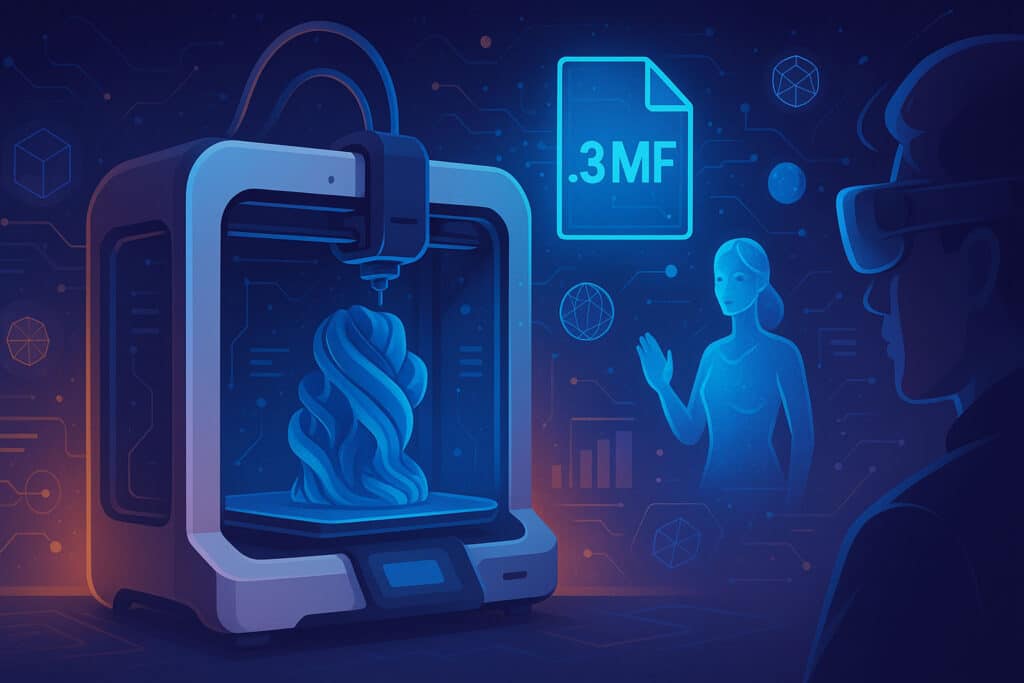
The .3MF file format is poised to play a critical role in the future of 3D printing, driven by its ability to solve many traditional problems associated with file compatibility and model fidelity. Here’s what to expect from the future of .3MF files in the industry:
1. Wider Adoption and Standardization:
- Industry Support: As more 3D printer manufacturers and software developers adopt .3MF as a standard, we can expect a significant increase in its usage. This widespread adoption will lead to better compatibility across different platforms and devices, simplifying the 3D printing process for all users.
- Regulatory and Compliance Frameworks: With the increasing use of 3D printing in critical sectors such as aerospace and healthcare, .3MF files are likely to be at the forefront of developing industry standards and regulatory frameworks due to their high fidelity and detailed attribute encoding.
2. Technological Innovations:
- Enhanced Features: Future developments in .3MF files may include advanced features such as embedded design rules, which could automatically suggest improvements or changes to optimize printing based on the printer’s capabilities.
- Integration with Emerging Technologies: The integration of .3MF files with other cutting-edge technologies like augmented reality (AR) and artificial intelligence (AI) could further enhance design and printing processes, making 3D printing more accessible and effective.
3. Expansion into New Markets:
- Custom Manufacturing: As .3MF files make it easier to incorporate detailed product specifications and color information, they are ideal for custom manufacturing. This capability could open new markets in bespoke consumer products, medical devices, and more.
- Education and Research: The precision and reliability of .3MF files make them particularly suitable for academic and research applications where detailed, accurate models are essential.
“The .3MF format is revolutionary for the 3D printing industry. Its ability to carry detailed metadata and support for complex geometries addresses many of the limitations of previous file formats. As we see more robust software and hardware solutions being developed, .3MF is likely to become the go-to file format for professional and recreational 3D printing.” – Dr. Jane Smith, Advanced Manufacturing Research Centre.
By embracing .3MF files, the 3D printing industry is moving towards a future where digital designs are translated into physical objects with unprecedented accuracy and efficiency. This transition not only enhances the capabilities of current technologies but also opens up exciting new possibilities for innovation and growth.
Conclusion
The .3MF file format represents a significant advancement in the field of 3D printing, addressing many of the limitations faced by older file formats like STL and OBJ. By offering enhanced detail, improved accuracy, and universal compatibility, .3MF files facilitate a more efficient and error-free printing process, which is essential for both professional applications and hobbyist projects.
Recap of Key Benefits:
- Rich Detail and Precision: Supports comprehensive metadata, including color, texture, and material properties, leading to higher quality prints.
- Increased Compatibility and Standardization: With growing industry support, .3MF files are becoming more universally compatible, reducing issues related to software and hardware interoperability.
- Streamlined Workflow: Integrates detailed print instructions directly into the file, minimizing preparation time and reducing the likelihood of print errors.
As we look to the future, the potential of .3MF files is boundless. With ongoing developments and wider adoption, this file format is set to revolutionize how we think about and execute 3D printing projects. Whether you are a designer, engineer, or hobbyist, embracing .3MF files will elevate your 3D printing capabilities, enabling you to create more complex, precise, and reliable prints.
Final Thoughts: For anyone involved in 3D printing, investing time to understand and implement .3MF files in your projects is a wise decision. The advantages they bring in terms of print quality and workflow efficiency can significantly enhance your productivity and the quality of your outputs.
We encourage you to explore more about .3MF files, experiment with them in your projects, and witness firsthand the improvements they can offer to your 3D printing experience. As the technology progresses, staying updated and adaptable to new file formats like .3MF will be key to leveraging the full potential of 3D printing technology.
Lorem ipsum dolor sit amet, consectetur adipiscing elit. Ut elit tellus, luctus nec ullamcorper mattis, pulvinar dapibus leo.
